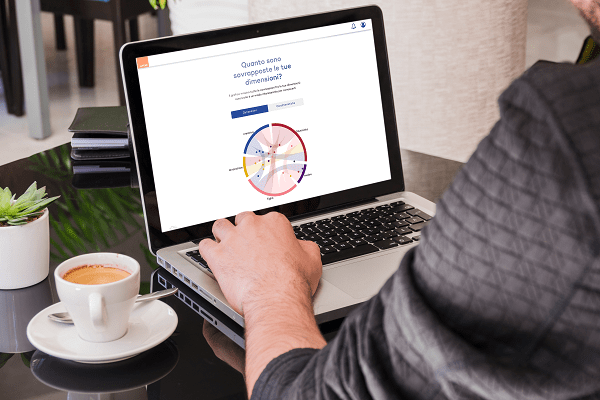9 August 2021
In an increasingly competitive market, engagement, retention and wellbeing gain strategic relevance for companies. Having said that, it’s not always easy for teams to understand how they can achieve results in these areas. According to Harvard Business Review, most companies offer to increase salaries, financial or training benefits and welfare offers to retain their employees.
There’s no doubt that these elements are important, but research shows that it’s the working environment that’s most likely to keep an employee happy in their role. The first element to help businesses stay competitive is recognising their employees identity dimensions. Not just as professionals, but also (and most importantly) as people.
Employees that differ from the majority of their colleagues in terms of religion, gender, socio-economic background or age are often hiding important aspects of their identity for fear of being judged negatively. It makes it difficult for companies to attract their talent, as it directly affects their reputation, productivity and competitive advantage. For employees, it’s quite impossible for them to feel connected to the company that they work for. The key to inclusion is understanding who the employees really are.
Lots of organisations carry out engagement and pulse surveys. But many fail to carry out a deep analysis of this data by truly listening to their people. And as a result, they lose out on opportunities to identify any problems that are hindering the Diversity&Inclusion strategy.

That’s why Diversity enriches us, but only if it’s managed. Otherwise, it can actually conflict with other objectives and initiatives. It adds value to teams when they are aware of it. Companies can no longer afford to respond with gender and work-life balance.
It’s not enough to include different profiles within the organization. Simply employing more women or people from different ethnic backgrounds won’t enrich the company in itself. D&I needs to be constantly worked on. Otherwise it becomes a passing trend that no longer stimulates research or questions, becoming a check-box exercise. That’s why it’s key for companies to invest in valuing their differences. It all starts with training managers in caring leadership models and working on recognising their employees’ transferable skills, starting with those gained through their life experiences.
DISCOVER HOW TO UNLOCK YOUR PEOPLE’S POTENTIAL
All we have to do is think about the paradox that our CVs (curriculum vitae) have become. The name literally means an ‘account of life’, but nowadays it only contains details of a person’s working experiences. LinkedIn noticed this too, after young mother Heather Bolan alerted them to the fact that she couldn’t choose anything other than pre-selected professions to add to her profile. This meant that people who had ‘taken a break’ from work, perhaps to travel, support a family member or recover from an illness, found themselves with an embarrassing ‘gap’ on their CV. This lead to suspicion and probing questions from recruiters.
But it’s through life transitions and caregiving experiences that we learn the most soft skills. These same skills can be valued in professional terms too. Even LinkedIn has become more flexible and allowed users to detail their life experiences that have boosted their professional profiles, even if they weren’t directly linked to a professional role.

Recognising and valuing diversity is the key to enriching the company. For this to happen, we need to be able to read the data that the company collects. We need to learn to ask the right questions, addressing people in their entirety, to avoid generalising. People Analytics shouldn’t just look at the tip of the iceberg. Rather, they must look at all of a person’s dimensions.
Alongside so-called Big Data ), we can dive into an exploration of Small Data. People’s self-narration can help us see the parts of the iceberg that lie beneath the surface. To do so, managers need to be trained in order to listen to people ‘while’ they are learning.
Discover the Mondelez International Case Study
Diversity is innovative if companies are able to highlight the diversity that lies in all of us, and show how it can be positively used through thinking outside the box, creativity and action.
Even feedback needs to consider all the elements that make up the person in front of you. Otherwise, this rating system won’t stimulate improvement, but rather negatively impact employee productivity, as well as the brand reputation. It all starts within the company.
Listening requires dedication. It’s tiring. But it’s also an investment. The time that managers dedicate to listening to their employees will unlock future benefits. They won’t be afraid of the changes that evolve within the company: every transition – whether at home or at work – can enrich us if it’s managed correctly. We just need to learn how to do so.